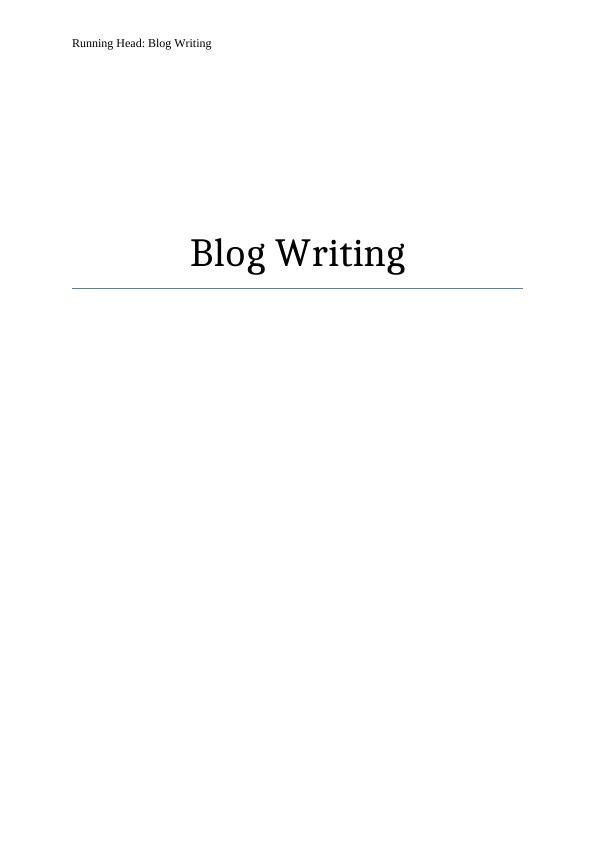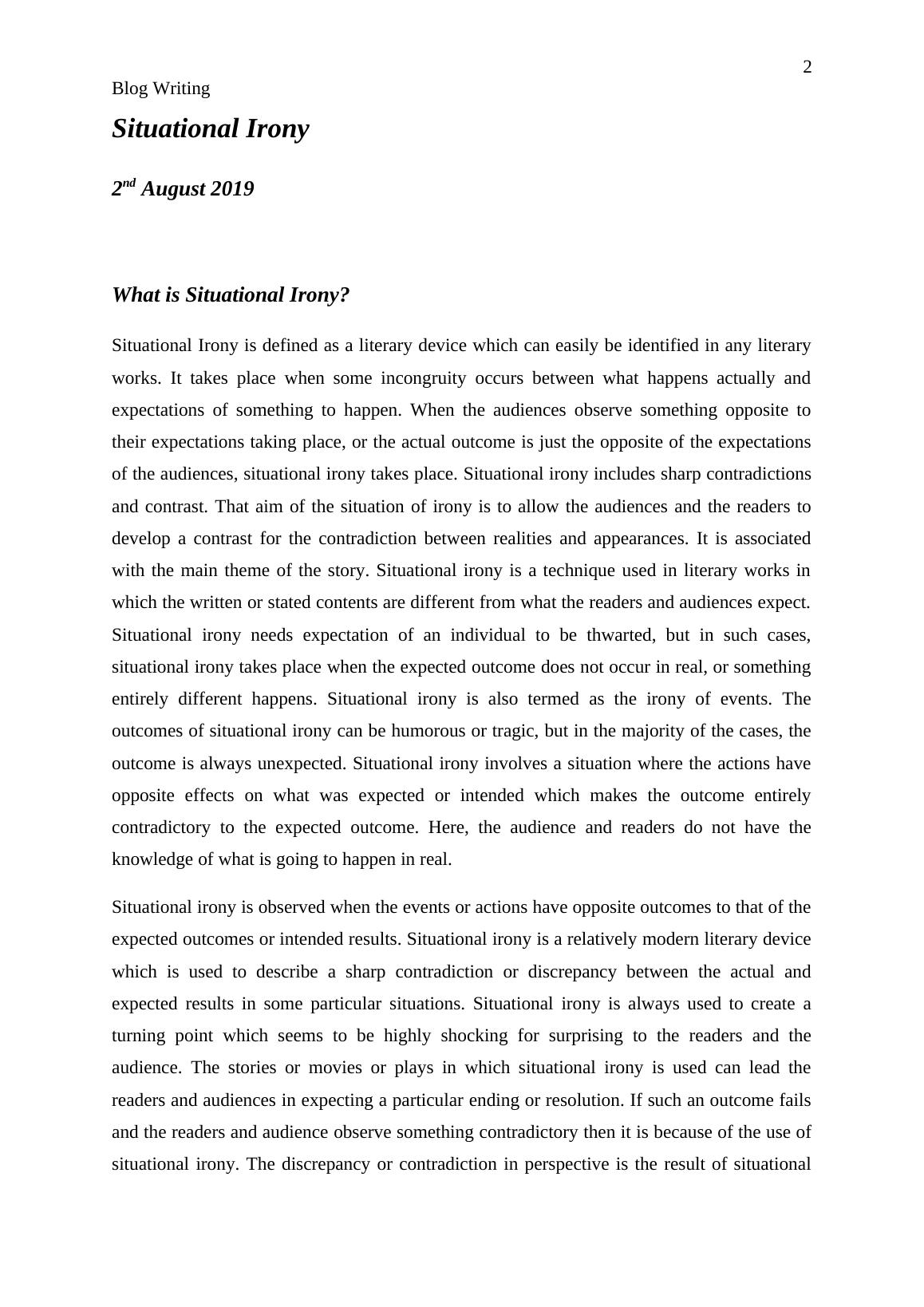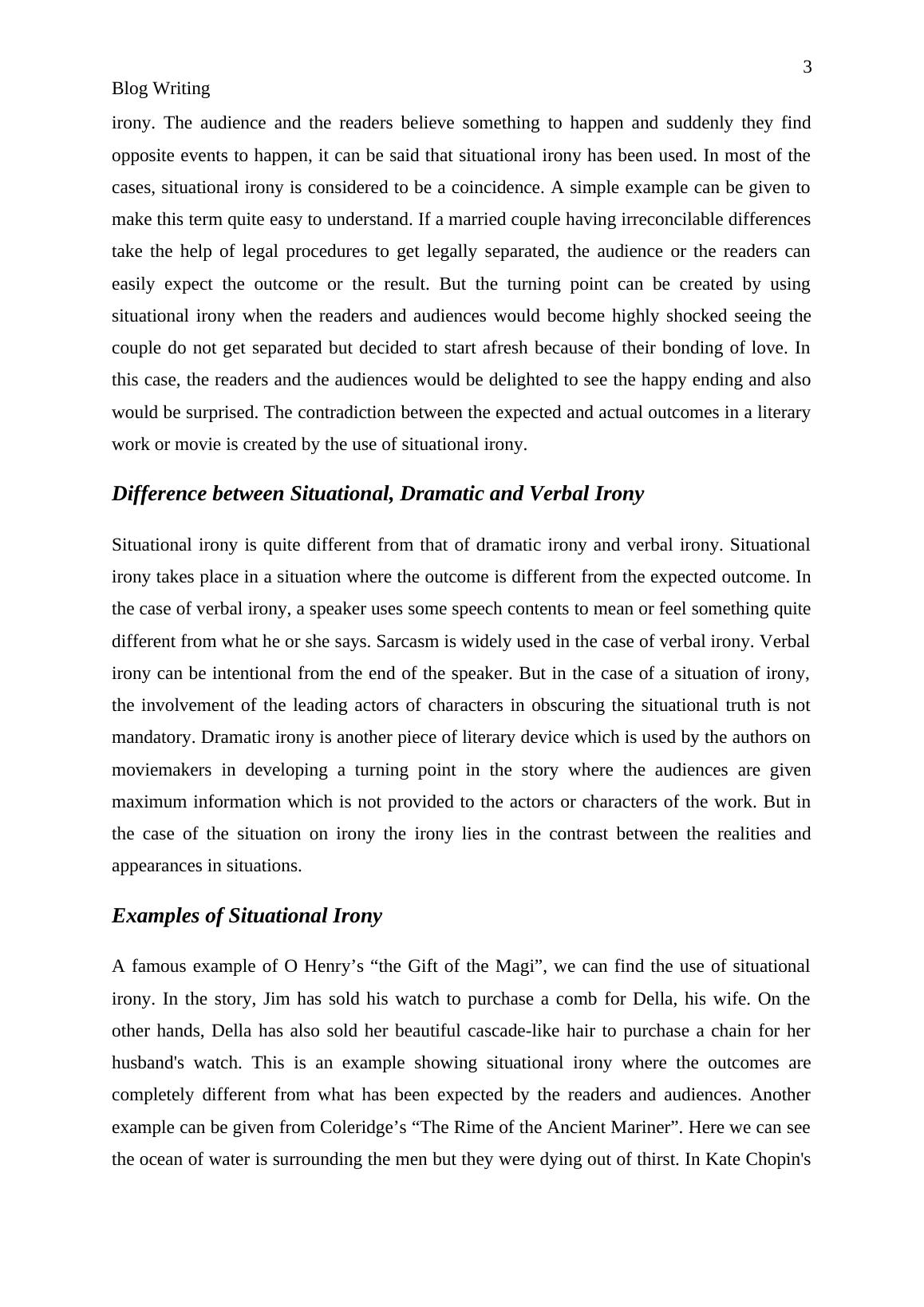Blog Writing: Situational Irony
7 Pages2740 Words186 Views
Added on 2019-09-23
Blog Writing: Situational Irony
Added on 2019-09-23
ShareRelated Documents
Running Head: Blog WritingBlog Writing

2Blog WritingSituational Irony 2nd August 2019What is Situational Irony?Situational Irony is defined as a literary device which can easily be identified in any literaryworks. It takes place when some incongruity occurs between what happens actually andexpectations of something to happen. When the audiences observe something opposite totheir expectations taking place, or the actual outcome is just the opposite of the expectationsof the audiences, situational irony takes place. Situational irony includes sharp contradictionsand contrast. That aim of the situation of irony is to allow the audiences and the readers todevelop a contrast for the contradiction between realities and appearances. It is associatedwith the main theme of the story. Situational irony is a technique used in literary works inwhich the written or stated contents are different from what the readers and audiences expect.Situational irony needs expectation of an individual to be thwarted, but in such cases,situational irony takes place when the expected outcome does not occur in real, or somethingentirely different happens. Situational irony is also termed as the irony of events. Theoutcomes of situational irony can be humorous or tragic, but in the majority of the cases, theoutcome is always unexpected. Situational irony involves a situation where the actions haveopposite effects on what was expected or intended which makes the outcome entirelycontradictory to the expected outcome. Here, the audience and readers do not have theknowledge of what is going to happen in real.Situational irony is observed when the events or actions have opposite outcomes to that of theexpected outcomes or intended results. Situational irony is a relatively modern literary devicewhich is used to describe a sharp contradiction or discrepancy between the actual andexpected results in some particular situations. Situational irony is always used to create aturning point which seems to be highly shocking for surprising to the readers and theaudience. The stories or movies or plays in which situational irony is used can lead thereaders and audiences in expecting a particular ending or resolution. If such an outcome failsand the readers and audience observe something contradictory then it is because of the use ofsituational irony. The discrepancy or contradiction in perspective is the result of situational

3Blog Writingirony. The audience and the readers believe something to happen and suddenly they findopposite events to happen, it can be said that situational irony has been used. In most of thecases, situational irony is considered to be a coincidence. A simple example can be given tomake this term quite easy to understand. If a married couple having irreconcilable differencestake the help of legal procedures to get legally separated, the audience or the readers caneasily expect the outcome or the result. But the turning point can be created by usingsituational irony when the readers and audiences would become highly shocked seeing thecouple do not get separated but decided to start afresh because of their bonding of love. Inthis case, the readers and the audiences would be delighted to see the happy ending and alsowould be surprised. The contradiction between the expected and actual outcomes in a literarywork or movie is created by the use of situational irony.Difference between Situational, Dramatic and Verbal IronySituational irony is quite different from that of dramatic irony and verbal irony. Situationalirony takes place in a situation where the outcome is different from the expected outcome. Inthe case of verbal irony, a speaker uses some speech contents to mean or feel something quitedifferent from what he or she says. Sarcasm is widely used in the case of verbal irony. Verbalirony can be intentional from the end of the speaker. But in the case of a situation of irony,the involvement of the leading actors of characters in obscuring the situational truth is notmandatory. Dramatic irony is another piece of literary device which is used by the authors onmoviemakers in developing a turning point in the story where the audiences are givenmaximum information which is not provided to the actors or characters of the work. But inthe case of the situation on irony the irony lies in the contrast between the realities andappearances in situations. Examples of Situational IronyA famous example of O Henry’s “the Gift of the Magi”, we can find the use of situationalirony. In the story, Jim has sold his watch to purchase a comb for Della, his wife. On theother hands, Della has also sold her beautiful cascade-like hair to purchase a chain for herhusband's watch. This is an example showing situational irony where the outcomes arecompletely different from what has been expected by the readers and audiences. Anotherexample can be given from Coleridge’s “The Rime of the Ancient Mariner”. Here we can seethe ocean of water is surrounding the men but they were dying out of thirst. In Kate Chopin's

End of preview
Want to access all the pages? Upload your documents or become a member.
Related Documents
Dramatic Irony | Assignmentlg...
|8
|2656
|430
